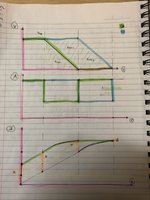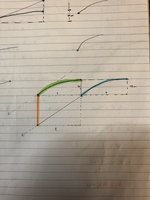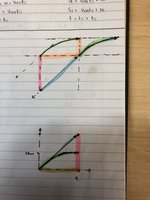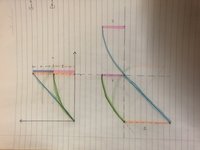Andwill117
New member
- Joined
- Jun 7, 2020
- Messages
- 13
Hi this is the same question I can’t get my head around.
reference: https://www.freemathhelp.com/forum/...ion-problem-i-can’t-solve.123133/#post-499779
Two cars are driving at the same constant speed on a straight road, with car 1 in front of car 2. Car 1 suddenly starts to brake with constant acceleration and stops in 10m. At the instant car 1 comes to a stop, car 2 begins to brake with the same acceleration. It comes to a halt just as it reaches the back of car 1. What was the seperation between the cars before they started braking?
All I want to know are enough values to make the same amount equations as there are variables.
Did I miss something or was the question not written properly?
ive attached past attempts.
Thank you
reference: https://www.freemathhelp.com/forum/...ion-problem-i-can’t-solve.123133/#post-499779
Two cars are driving at the same constant speed on a straight road, with car 1 in front of car 2. Car 1 suddenly starts to brake with constant acceleration and stops in 10m. At the instant car 1 comes to a stop, car 2 begins to brake with the same acceleration. It comes to a halt just as it reaches the back of car 1. What was the seperation between the cars before they started braking?
All I want to know are enough values to make the same amount equations as there are variables.
Did I miss something or was the question not written properly?
ive attached past attempts.
Thank you
Attachments
Last edited by a moderator:





